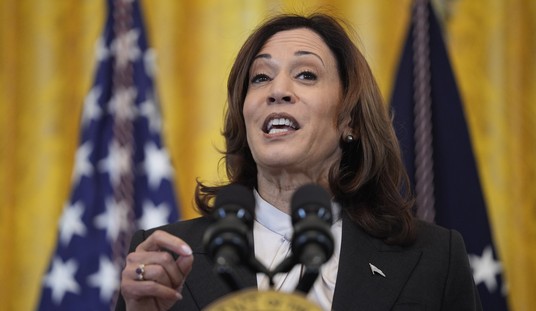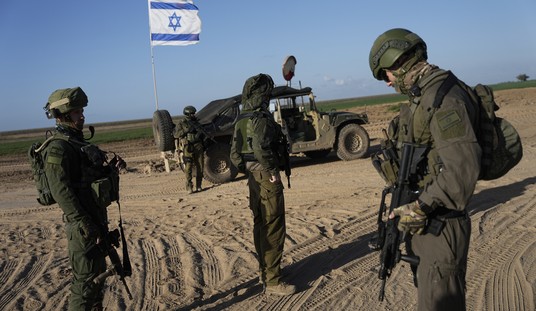The controversial arrest and death of Freddie Gray–he died in police custody of a spinal injury–hurled the city of Baltimore into an unpleasant era of unrest. Some unrest occurred during the White House Correspondents Dinner on April 25. As Freddie Gray was laid to rest two days later, the unrest was reignited with an intensity that left the city completely unprepared to deal with the rioters who seemed to have outmaneuvered the Baltimore Police Department. As the security situation continued to deteriorate, Gov. Larry Hogan declared a state of emergency, deploying the National Guard in order to restore order. The Baltimore Sun obtained over 7,000 emails from city officials during the unrest showing how things devolved into chaos:
Even as Baltimoreans were breaching pharmacies and supermarkets, emails show, police were waiting for riot gear that was on order.In one terse email — sent as the rioting was breaking out — William M. Johnson, the city's transportation director, called the confusion among city leaders "unacceptable."
"This issue needs to be corrected unless I am the only person who finds this unacceptable," he wrote to mayoral aides at 3:14 p.m., as television broadcast images of fighting at Mondawmin Mall. "Local news stations are reporting on what is happening, downtown buildings are closing early, and when the City looks to the Administration for leadership and answers, we don't know or we are the last to provide any guidance due to this protocol."
[…]
The documents also show that Mayor Stephanie Rawlings-Blake and Gov. Larry Hogan disagreed about when to lift the city's curfew and that police were planning for the potential for further violence on May 1 and 2.
The city withheld an unknown number of documents, saying state law does not require disclosure of information that is part of the "deliberative process."
[…]
Another email detailed a list of police gear that was being deployed, including 259 masks sent to the Western District. Four hundred and seventy-four more mask packs were ready to be distributed, and another 1,000 had been ordered wrote Thomas Moore, who was then chief financial officer for the Police Department.
In an update sent at 7:21 p.m., he said 17 riot bags were assembled and pepper spray canisters were ordered.
"Working on having 200 shields delivered from manufacturer for tomorrow delivery, Wednesday latest," Moore wrote.
Within hours of rioting, the city's finance director, Henry Raymond, signed off on the purchase of thousands of additional pieces of equipment.
He was asked for 1,000 pairs of "protective riot gloves," 1,000 pieces of chest, leg and arm protection items, 1,000 riot shields and 1,000 baton rings, among other items.
"Approved," Raymond wrote in an email with a 4:01 a.m. time stamp.
Johnson's strongly worded email followed a series of communications among city officials expressing concern that violence would break out on the day of Gray's funeral.
Drew Vetter, the Police Department's government affairs director, sent an email to elected officials at 10:13 p.m. Sunday warning that some students intended "to 'walk out' after first period and/or around 3pm tomorrow and head Downtown. BPD will be closely monitoring the situation and officers will be deployed accordingly."
By the next day, some officials were already talking about the possibility of a riot breaking out at Mondawmin Mall.
In an email marked "URGENT" sent at 1:52 p.m., Olivia D. Farrow, a deputy health commissioner, said the agency had "received reports that children will possibly riot after school starting at 3p down from Mondawmin to North Ave and to downtown. Staff at Druid becoming concerned. May need to close early. Waiting to see if rumor or if something seems to begin happening."
Recommended
At 3 p.m., the rioting began at Mondawmin in what became a long, destructive night for the city. Even Mayor Stephanie Rawlings-Blake admitted that the city could have been better prepared to deal with the fallout from the Gray incident.
In the end, the six police officers involved in Gray’s death were indicted on a multitude of charges, including misconduct in office, manslaughter, false imprisonment, reckless endangerment, and second-degree assault. The city’s police department isn’t new to controversy regarding misconduct and improper arrests. Nevertheless, Police Commissioner Anthony Batts was fired on July 8, and his deputy took the reins of a “demoralized” department. Neighborhoods that once slammed the police were now yearning for their return as crime spiked. A review of the incident by the city’s police union described the tragic events of the rioting as “preventable,” though Mayor Stephanie Rawlings-Blake’s office didn’t agree with the police union’s conclusions, she did fire Batts shortly after its release.

























Join the conversation as a VIP Member